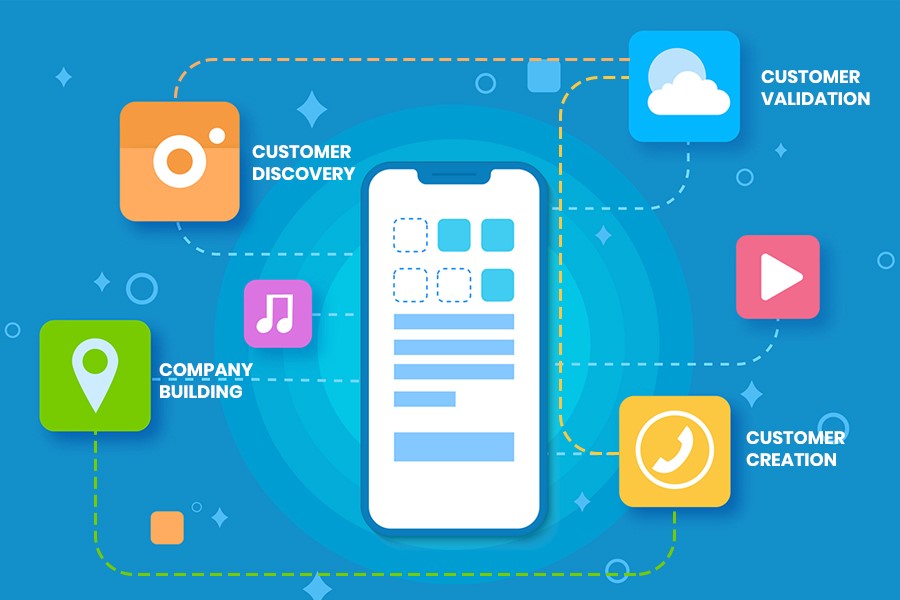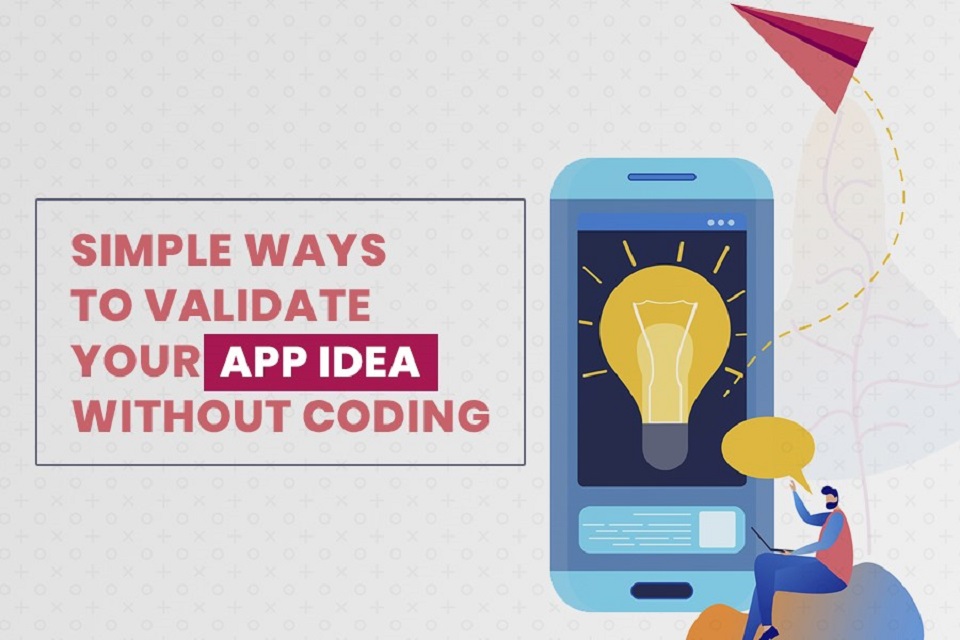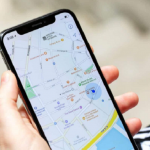As per Gartner’s report, less than 0.01 percent of mobile apps become financially successful in 2018-19. Too often, we think our mobile idea is excellent, and we spent a lot of money and time building. But, later we find out that nobody wants to download the app. So here in this blog, I want to save your time, energy, and, most importantly, I’m going to save your valuable money without building an app. Here, you’re going to learn how to validate your app idea so you can develop your app confidently and avoid wasting time, money, and effort, developing an app that no one wants.
Knowing whether people will want to use your mobile app can be tricky because there are multiple phases within the A/B testing validation process, and at least 90% of app founders are entirely unaware of this. But the method you will learn here will make it simple for you to follow each critical phase to validate your app with A/B testing and start building and making essential decisions confidently. Let’s dive right in:
Types of App Founders
There are generally two types of App founders:
- Those who build their app based on data and feedback
- The others build their app based on their ideas
Now the mobile app you’re building will, of course, be found around the thoughts and ideas you’ve had, but it’s critical to do thorough testing, analyzing, and research alongside your ideas.
It is seen that too many founders spent at least a year or more building the first versions of their mobile apps without ever stopping to test or get feedback along the way. And it happened with service. They have a cool idea for an app, something they think is revolutionary and new. Then they go right into spending tons of time, effort, and often money building the whole thing out. Once they’re finished, which honestly rarely happens, they launch the app to crickets.
It’s a challenging process to watch someone go through because it’s both defeating and deflating. Spending months or even years building something only to realize no one wants it is an awful experience. A lot is going on between when they initially come up with the idea and when they realize no one wants it.
Steps of App Validation
There are three main factors that hold them back from sting success. The first is that they fail to identify a problem and instead came up with an idea. Here, I will say that when you come up with an idea for an app, you’re building something you think will be successful. When you identify a problem you can solve with an app– on the other hand– you’re coming up with a solution for something you already know people struggle with. Most founders build their ideas, but the first critical step is to solve a problem instead.
Assuming a founder is solving any specific problem, the second crucial step to building an app strategically just doing a bunch of guesswork is to validate the idea through A/B testing. This lesson is all about A/B testing validation and I want to quickly point out that there are two steps in the validation process. If you have any issues, there are app development companies in Los Angeles that can help find solutions to your problem.

1. Find Problem That You App Solves
First, though, a founder must validate their app idea, and this is the solution they’ve come up with to solve a problem they’ve identified. This is a step too many people ignore because they think that if they’ve seen a crisis happening, there’s no doubt people will want to use the solution they’ve come up with. You need to remember that your app ideas are never valid until they’ve been tested.
Before testing an idea within your market, all you’re doing is guessing; you’re hypothesizing. To build a successful app solution, you have to validate those guesses with A/B testing. Now a lot of people think validating an idea is hard. They are probably confused with some questions like who they reach out to or what they ask them. But this goes back to our first point: you must identify the problem you’re solving before doing anything else. If you’ve identified a specific issue, validating your idea with A/B testing is easy because you should, without question, know precisely who has the problem you’ve identified. If you don’t remember who right has the problem you’ve placed, it means you haven’t defined the problem. It all goes back to that very first step; everything can build from there.
2. Find Potential Customers
The second stage is to find potential users. Assuming you’ve identified a specific problem, you need to make sure the people who have that problem want a solution to it. You can do this in many different ways. Most of our clients are building mobile apps for their businesses or industries, and this is important.
- We’ve seen clients pitch an app idea to the highest level of management teams and their companies to see if a company would want to replace internal processes with an app.
- We’ve seen the pitch an app idea to their current customers or clients to get feedback.
- We’ve also seen them reach out to other businesses in the same industries to gauge interest in an idea for a solution.
- We’ve seen them come up with the idea that solves a problem in their own business, and they can personally validate that way.
- We’ve seen them pitch an app idea to their close friends or family members’ business teams.
The list could go on, but it’s essential to understand that if you know the problem you’re solving and have experience with it, you will automatically have people with you to validate your idea with A/B testing.
3. Create a Landing Page
If you don’t happen to have personal business connections, you can run polls, put up a landing page, and ask people to opt-in for release updates. You can reach out to businesses via phone or email. Regardless of who you reach out to validate your idea, though, there’s one thing you need to be acutely aware of at this point. In the concept of the validation stage, you do not need to build a mobile app. Most founders overlook this. They come up with an idea, and immediately they develop their app and then have no idea what to do when it comes to launching it. They ask things like:
- Who should I market my app to?
- How do I know if people want to use my app?
- How do I promote my app?
Those questions point to a deeper problem, though. And it has everything to do with validating an idea without actually building it first. This doesn’t just relate to building mobile apps, either. For example, in business, savvy owners know to validate a product idea before ever making or creating it.
4. Try to Pre-Sell Your Product
For instance, they might pre-sell a product or a digital course without starting it. By pre-selling, they can gauge exactly how much interest there is for their work before putting time and effort into it. Thus nothing is lost if they don’t get the validation they need. One of the things you can do while validating your MVP program with A/B testing is always to ask people to apply first. This involved people spending at least 15 to 30 minutes filling an application and explaining why they wanted to join the program. Based on direct feedback you got from the applications, which served as validation for your app idea, you then create the program’s basic framework and pre-sell it.
Once you validate your idea in any of the ways we just talked about, you will then move on to the next validation stage, validating your actual product. In this case, you have several applicants enroll right away that can validate the product itself. And from there, you build out the rest of the program. So it starts with a simple email asking people to apply for the program you hadn’t created yet.
Once you receive validation for that which is in the form of applicants, you make the program’s basic framework. You can also look at this as the version of it the Minimum Viable Product. You pre-sell it, which is your product validation stage, and after applicants enrolled in the program, you can create the rest of it. So, in other words, you have validation for the product at that point because people have enrolled that permits you to speak to put more time and effort into expanding the work.
A/B testing App Validation Tips
Most founders skip these stages to identify a problem and then seek validation for their ideas without ever building anything. And they instead jump forward into this stage. What happens is they come up with an idea and fail to get validation for it. They start building it without getting confirmation on all the features throughout development. They then publicly launch the app, expecting to make money, but people rarely pay for cool ideas; they pay to solve problems.
If you don’t know for sure whether people want an app to solve their problem, you couldn’t very well end up wasting lots of time and money building it. The reality is most founders fail to seek any validation for their apps at all. But to break that down even further, they also overlooked that validation should happen in two distinct steps.
The first heart is to validate your app idea only, and you can do this without ever even building an app. You can talk to colleagues, speak with management, validate based on your own needs, and more. You can reach out to anyone in your network who’s related to the problem you’re solving. This should be easy, assuming you’ve identified the critical problem first.
The next part is to validate your app product. Once you receive positive feedback in the validation stage idea, you can move on to creating the primary outcome and the beauty; since you have already validated a need for your product idea, you can move forward with your mobile apps development confidently.
Without hoping or wondering whether people will want to use it. At this stage, validation of your product can come in the form of early signups, onboarding test groups, pre-selling subscription or purchase subscriptions or purchases, and many more. This stage isn’t about making money. Sure it brings-in some revenue can serve as validation, but this isn’t the point at which your focus should be on. Having a profitable business, it should be about getting feedback. Remember to identify your app solves, validate your app idea first, and then validate your app product.
Let’s Wrap Up:
I hope that helped you learn a helpful new strategy for your mobile app. With the steps, you should build your app confidently without risking time or effort going down the drain. Once you validate your mobile app idea with A/B testing, make sure to hire a reputed mobile application development company that can convert your app idea into reality and add all the required features in your app to make it unique.


